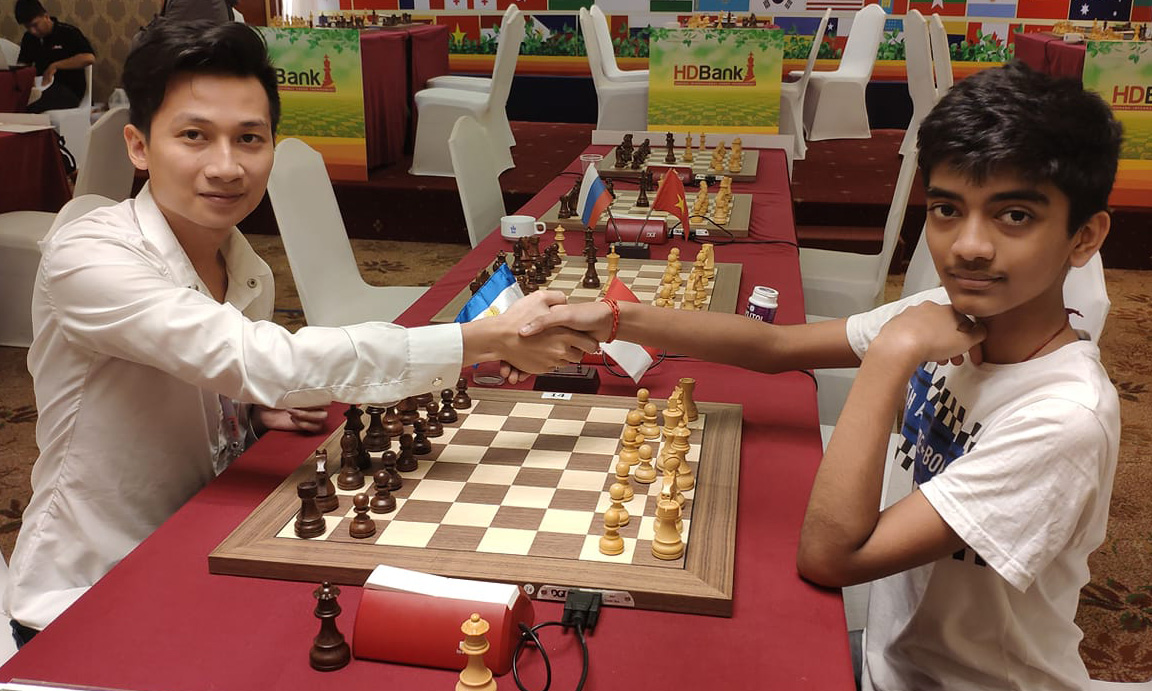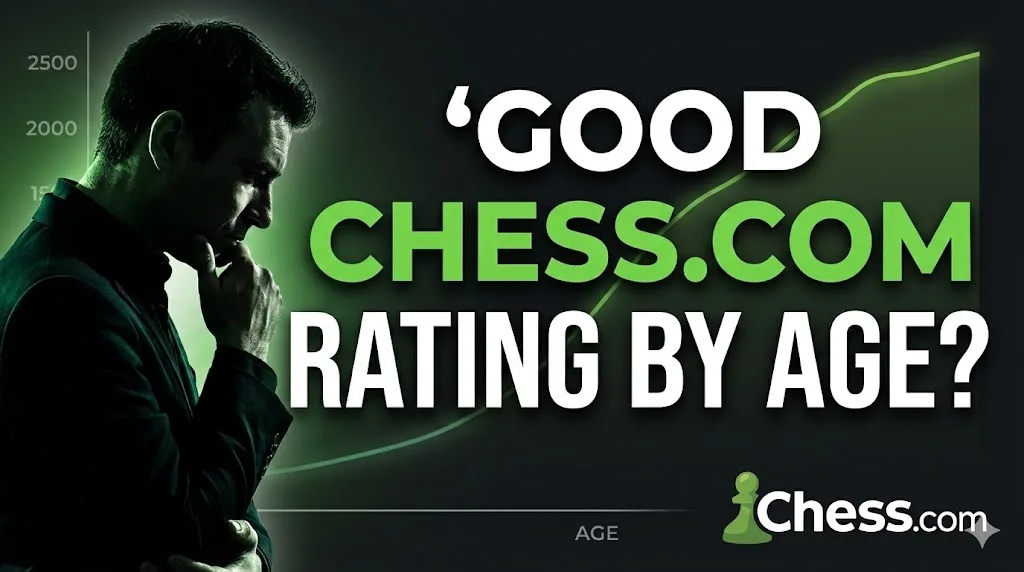Chess.com ratings can feel confusing. Some kids hit 1500 in months. Some adults stay at 800 for years. And every once in a while, a prodigy appears—a 10- or 12-year-old hitting 2500+ online, with a few even touching 2700–3000 territory in certain time controls. Meanwhile, the highest Blitz ratings on Chess.com overall hover a bit over 3000 among the top grandmasters.
So what rating is actually “good” for your age?
This guide gives practical benchmarks, realistic expectations, and a prodigy tier so you can compare without unrealistic pressure.
How to Understand These Ranges
Each age group now includes five tiers:
- Beginner / Casual – Just getting started.
- Good – Solid understanding for the age group.
- Very Good / Club Level – Serious amateur who studies and plays often.
- Strong / Competitive – Tournament-ready and well above average.
- World-Class / Prodigy Level – Extremely rare. Often national-team prospects, titled juniors, or elite talents performing at adult-master level or higher.
Important note: Chess.com ratings are not the same as FIDE or USCF. Online pools, starting ratings, and time controls all affect numbers. Still, these ranges reflect modern, realistic online expectations.
Ages 7–10
Beginner / Casual: 300–700
Good: 700–1000
Very Good / Club Level: 1000–1400
Strong / Competitive: 1400–1900
World-Class / Prodigy Level: 1900–2400+
Kids in this age range learn incredibly fast. Hitting 1000 before age 10 is already strong. Getting above 1500 suggests the child is studying tactics actively. The prodigy tier (2000+) includes children who train regularly, compete internationally, or show very rare early mastery.
Ages 11–12
Beginner / Casual: 400–800
Good: 800–1200
Very Good / Club Level: 1200–1700
Strong / Competitive: 1700–2200
World-Class / Prodigy Level: 2200–2500+
This is the age where the most famous prodigies start breaking into adult-master territory. Several 11–12-year-olds worldwide have crossed 2400+ online, and a handful push 2500. These kids typically compete in national championships, with professional coaches and structured training.
Ages 13–14
Beginner / Casual: 600–900
Good: 900–1300
Very Good / Club Level: 1300–1800
Strong / Competitive: 1800–2300
World-Class / Prodigy Level: 2400–2600+
By early teens, strong tournament juniors regularly appear in the 1700–2000 range. The highest performers—young IM-level talents—can exceed 2400–2600 in online blitz or rapid.
Ages 15–18
Beginner / Casual: 700–1100
Good: 1100–1500
Very Good / Club Level: 1500–1900
Strong / Competitive: 1900–2300
World-Class / Prodigy Level: 2500–2700+
Older teens who train seriously often sit in the 1800–2100 cluster. Online prodigies in this band include future IMs/GMs who can compete with top adult players. Some 16–18-year-olds have hit 2600+ in online blitz.
Ages 19–29 (Peak Development Years)
Beginner / Casual: 800–1200
Good: 1200–1600
Very Good / Club Level: 1600–2000
Strong / Competitive: 2000–2400
World-Class / Prodigy / Elite: 2600–3000+
Many players reach their lifetime peak here—combining youthful calculation with adult discipline. Online super-GMs dominate the 2800–3000+ range in blitz and bullet. A few elite online specialists even exceed 3100 in peak blitz ratings.
Ages 30–49
Beginner / Casual: 800–1200
Good: 1200–1600
Very Good / Club Level: 1600–1900
Strong / Competitive: 1900–2300
Elite Adult Strength: 2300–2600+
Adults in this group often balance chess with work and family. Improvement is absolutely possible—many reach their personal peak in their 30s and 40s. Ratings above 2200 online place you in a strong amateur category; above 2400 means near-master strength.
Ages 50+
Beginner / Casual: 700–1100
Good: 1100–1400
Very Good / Club Level: 1400–1700
Strong / Competitive: 1700–2100
Elite Senior / Master Level: 2100–2400+
With experience and good pattern memory, many seniors remain very competitive. Ratings above 2000 at this age reflect deep understanding and decades of practice.
Why Online Prodigies Reach 2500–3000
Chess.com ratings allow extremely active, tactically gifted players to climb fast, especially in blitz and bullet. Factors include:
- Huge player pool, giving prodigies constant strong opposition.
- Rating inflation in certain time controls, allowing exceptional spikes.
- Kids learning tactics at a young age, sometimes with coaches, AI tools, and structured training.
- Top online specialists playing thousands of fast games.
It’s not unusual today to see a 12-year-old prodigy at 2400–2600 online—even higher in bullet.
A note about time controls, platform differences, and percentiles
Chess.com ratings differ by time control (Bullet, Blitz, Rapid, Daily). Rapid is often used as the standard reference, but your best measure is the time control you play most. Also, platform differences matter: Lichess, Chess.com, and OTB (FIDE/USCF) ratings use different pools and calibration—so a 1500 on one site is not identical to 1500 on another. Online rating curves also change as new users join with default starting numbers, which affects averages and medians.
Practical advice: what to aim for at your age
For serious competitors. If you want national titles, map the online number to OTB norms and get a coach—elite progress requires structured study and tournament experience.
Set process goals, not only numbers. Learn tactics, practice endgames, and review your games. Ratings will follow.
Pick a time control and stick with it. If you want tournament skill, focus on Rapid and OTB play.
If you’re a parent. Encourage fun and steady progress. For kids, a jump from 800 to 1200 in a year is a strong, realistic goal with regular coaching and play.
Rating Comparison Table: Good Chess.com Rapid Ratings by Age
| Age Group | Beginner / Casual | Good | Very Good / Club | Strong / Competitive | World-Class / Prodigy / Elite |
|---|---|---|---|---|---|
| 7–10 | 300–700 | 700–1000 | 1000–1400 | 1400–1900 | 1900–2400+ |
| 11–12 | 400–800 | 800–1200 | 1200–1700 | 1700–2200 | 2200–2500+ |
| 13–14 | 600–900 | 900–1300 | 1300–1800 | 1800–2300 | 2400–2600+ |
| 15–18 | 700–1100 | 1100–1500 | 1500–1900 | 1900–2300 | 2500–2700+ |
| 19–29 | 800–1200 | 1200–1600 | 1600–2000 | 2000–2400 | 2600–3000+ |
| 30–49 | 800–1200 | 1200–1600 | 1600–1900 | 1900–2300 | 2300–2600+ |
| 50+ | 700–1100 | 1100–1400 | 1400–1700 | 1700–2100 | 2100–2400+ |

I’m Xuan Binh, the founder of Attacking Chess, and the Deputy Head of Communications at the Vietnam Chess Federation (VCF). My chess.com and lichess rating is above 2300. Send me a challenge or message via Lichess. Follow me on Twitter (X) or Facebook.

